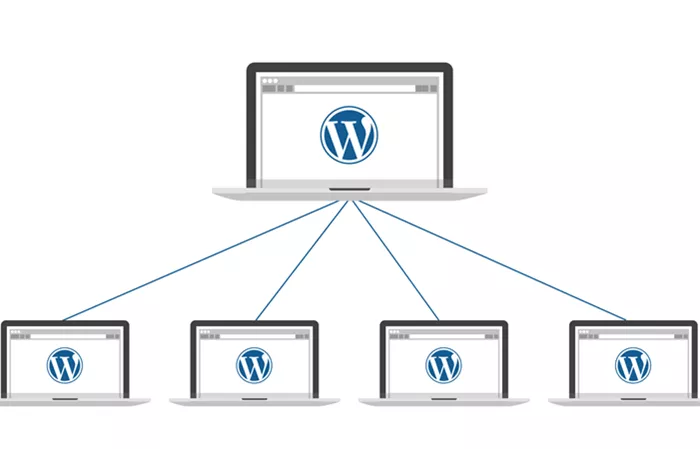As digital enterprises expand across multiple brands and regions, the demand for centralized, scalable website management has surged. WordPress, which powers over 61.3% of CMS-driven websites as of May 2025 (W3Techs), is increasingly being used not just for standalone sites but also as a platform for managing entire brand ecosystems through its Multisite functionality.
According to industry data from Kinsta, more than 500 new WordPress sites go live each day among the top 10 million websites globally. For organizations managing five, ten, or even dozens of sites, traditional single-installation methods are proving inefficient. WordPress Multisite is gaining traction as a preferred method to streamline operations, reduce maintenance costs, and standardize branding at scale.
Centralized Control Without Sacrificing Flexibility
WordPress Multisite allows organizations to operate multiple websites from a single dashboard. This centralized system gives super administrators the power to manage themes, plugins, updates, and user roles across an entire network. At the same time, individual brand or regional teams can maintain their own content and customize their sites according to local needs.
The system supports domain mapping, enabling each site to run on a unique URL while still operating under the same backend infrastructure. This balance of centralized governance and localized autonomy makes Multisite especially suitable for multi-brand enterprises.
Efficiency Through Shared Resources
One of the biggest advantages of Multisite is its “update once, apply everywhere” model. Updates to WordPress core, themes, and plugins can be deployed across all sites simultaneously, improving security and saving time. Network-wide plugin activation also eliminates redundancy and enforces uniform web development standards.
Some organizations extend functionality further by integrating content synchronization tools like Multisite Content Copier or enterprise platforms like WordPress VIP. These allow teams to distribute content from a central hub to selected child sites, enhancing consistency while reducing manual workload.
Improved Security and Maintenance
Security is another strong suit of the Multisite setup. Shared security protocols—such as centralized firewalls, two-factor authentication, and malware scanning—can be implemented across all sites. Although all sub-sites share a database, each uses a separate table prefix, creating logical isolation that limits the blast radius of any single breach.
Maintenance is simplified through single-dashboard updates and backup management. Administrators can back up the entire network or configure individual backups for specific sites, reducing both technical risk and operational burden.
When to Use—and Avoid—WordPress Multisite
WordPress Multisite is ideal for use cases involving interconnected sites under a shared brand umbrella, such as:
-
Franchise networks needing localized but consistent branding
-
Corporate groups with multiple product lines or regional portals
-
Educational institutions managing departmental or campus-specific sites
-
Multi-location businesses or multilingual publishing networks
However, Multisite may not be suitable for websites that demand full autonomy, unique plugin stacks, separate hosting environments, or strict data isolation—especially in regulated industries such as healthcare or finance. Compatibility issues with certain plugins and complex backup and migration procedures can also pose challenges.
Building a Scalable Multisite Network
Setting up WordPress Multisite involves several key technical steps:
-
Backup existing files and databases
-
Enable Multisite
-
Choose between subdomains or subdirectories
-
Complete configuration through the dashboard and edits
Subdomains (e.g., brand1.example.com) support stronger brand differentiation, while subdirectories (e.g., example.com/brand1) can benefit SEO by consolidating domain authority.
To preserve design consistency while allowing customization, developers often create child themes based on a common parent theme. These can be network-enabled and styled uniquely per brand.
Integrating Business Tools and Analytics
A growing number of enterprises are integrating Multisite networks with CRMs like Salesforce, marketing platforms, and analytics tools such as Google Analytics 4. This enables centralized data collection and reporting while preserving separate frontend experiences for each brand.
Plugins like User Role Editor and Multisite User Management help balance network-wide permissions with localized content control. Tools such as ManageWP and WP Umbrella support uptime monitoring, automated reporting, and centralized maintenance across the entire network.
Recommended Plugins for Multisite Networks
For optimal performance and functionality, experts recommend the following:
- WP Rocket (configured per site) for caching and speed optimization
- Yoast SEO for localized search engine optimization
- WPML for multilingual content management with network-wide licensing
These plugins ensure that each brand site is optimized for performance, visibility, and audience engagement.
Conclusion
WordPress Multisite offers a compelling solution for businesses managing multiple websites under a unified brand or infrastructure. With centralized control, streamlined updates, and modular flexibility, it enables organizations to scale efficiently while maintaining consistent brand standards.
However, careful planning is essential. Organizations should evaluate commonalities and differences across their websites—such as shared plugins, branding needs, and user roles—before adopting a Multisite setup. A robust technical foundation, including scalable hosting and modular design systems, is key to long-term success.
With the right strategy and tools in place, WordPress Multisite can reduce operational friction, speed up deployment, and deliver a cohesive digital experience across every brand in your portfolio.
Related Topics
- WordPress Maintenance Plans Explained
- Connecting WordPress and Google Analytics: From Setup to Insights
- How to Log Into the WordPress Admin Dashboard

